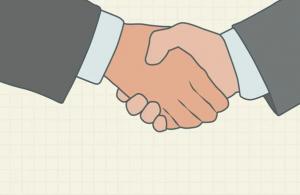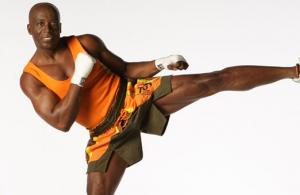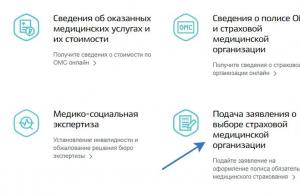A punctured wheel is usually indicated extraneous noise outside, as well as loss of speed and deterioration in handling. If the car pulls to the side, and in order to keep it on the road, you have to make an effort, then most likely a puncture on one of the front wheels. If the back of the car starts to skid, then the problem is there.
When this happens, you will understand exactly what it is. Don't panic by any means. Align the car and, gradually reducing speed, pull over to the side of the road.
How to change a wheel
1. Park on the side of the road
You can’t continue driving with a punctured tire, but it’s also not a good idea to stop in the middle of the road. Therefore, do not be afraid to drive a couple of tens of meters and choose a flat, dry place on the side of the road.
Drivers of cars with mechanical box gears, it is imperative to turn on the first gear, and the owners of the automation must move the lever to the parking position (P).
And in any case, you need to put the car on the handbrake.
2. Install the warning triangle and prepare the tools
Parking the car in safe place don't forget to enable alarm and set a sign emergency stop which is in the trunk. IN settlements it is placed 20 meters behind the car, and on the highway - 40 meters.
In the same place, in the trunk, find a spare tire and a jack with a wheelbrace. Usually the manufacturer places all this in a special niche under the floor, which can be reached by lifting the bottom panel.
It is good if you have a pump and a pressure gauge with you to check the pressure, as well as wheel chocks. And, of course, gloves will not interfere, since you still have to get your hands a little dirty.
3. Remove the wheel
After taking out all the tools and spare tire, lay them out next to the punctured tire and ask all passengers to get out of the car. Even if it's outside or pouring rain, safety comes first.
Despite the handbrake and the gear engaged, before installing the jack, you must additionally fix the wheels with stops. For them, however, any stones or pieces of brick will pass.
If you need to replace rear wheel, stops are placed on both sides of the front wheels, and vice versa.
Now you can start removing the wheel. First, remove the disc from the plastic cap and use the wheelbrace to loosen the bolts. To move them from their place, you will need a lot of effort, which can be provided by the weight of your body by simply pressing on the key with your foot. It is not necessary to completely unscrew the bolts: it is enough to unscrew them one turn.
After that, you need to raise the car with a jack. In no case should you install it anywhere. Especially for these purposes, there are small reinforced seats, which are usually behind front wheel or just before the rear. The manufacturer designates them using triangles or cutouts at the bottom of the thresholds. If the weld is covered with plastic pads, they will break at the jacking points.
Move the jack under the bottom and start turning its handle clockwise. Be sure to make sure that the jack rises evenly, does not heel.
If, under the weight of the machine, the lower leg of the jack goes into the ground, you need to put something like a piece of board or brick under it.
Don't raise the wheel too much. It is enough to stop 5 cm from the ground. After that, you can completely unscrew the bolts and remove the punctured wheel from the hub. It is better to push it under the car as insurance, and put the bolts somewhere on a rag so that they are not lost.
4. Install and check the spare tire
It remains to put a spare tire instead of a punctured wheel. To do this, align the holes on the disc with the holes in the hub, put the wheel on and screw on the bolts, completely wrapping them by hand.
It is important to install the nuts that fasten the wheels to the hub with the semicircular side towards the disk, and not out.
Remove the punctured wheel from under the car, lower the jack and finally tighten the bolts. You need to do it right. On wheels with four or six holes, opposite bolts are tightened in pairs. If there are five holes, then you need to pull in this order, as if you are drawing a five-pointed star.
It remains to assemble the tool, remove the jack and stops, and also check the pressure in installed wheel and pump it up if necessary. If the pump is not at hand, you can ask for help from drivers passing by.
If you use a small-sized spare tire, the so-called dokatka, then do not forget about caution: you can usually drive on it at a speed of no more than 80 km / h and for a maximum distance of 100 kilometers.
And, of course, try to fix a punctured wheel as soon as possible in a specialized tire shop, so as not to tempt fate and not drive without a spare wheel.
And when turning, it largely depends on the direction of travel. rear axle along the front track. This is necessary to reduce the steering angle of the car and the wear of its tires. The use of a controlled rear axle allows you to reduce lateral acceleration when turning the car, which increases its stability. Significantly improve vehicle handling
- Firstly, the sensitivity of the car to the steering wheel is increased. Indeed, when driving quietly along city streets, it is better to have a “sharp” steering not to rotate wheel several revolutions with each maneuver. On the freeway, “sharp” steering can cause problems - the car will react too sharply even to small steering.
- Secondly, to improve the maneuverability of the car when parking or turning in cramped urban conditions, that is, to reduce the turning radius.
- And thirdly, to increase directional stability during sharp maneuvers at high speed.
Turn rear wheels in the same direction as the front, allows you to keep the direction and speed of the center of mass of the car, but significantly increase the instantaneous turning radius. At the same time, the forces acting on the car are reduced and, as a result, directional stability is increased.
When driving at low speed, the rear wheels turn in antiphase with the front wheels, and the instantaneous turning radius decreases, and when driving at high speed in a fast turn or when changing lanes on the freeway, the rear wheels, on the contrary, will turn a small angle in the same direction as the front ones. For example, a car, making a maneuver on a freeway, will not seem to turn, but move from row to row parallel to the lane markings. In this case, the car will move along an arc of lesser curvature and a larger radius. The moment turning the car around the vertical axis will be less - therefore, the risk of losing exchange rate stability and development of rear axle skid.
Rice. The turning radius of a conventional car (ICP - instantaneous turning center) and a car with all steerable wheels(4WS)
In this regard, some manufacturers introduce control into the design of the car. rear axle. Mitsubishi was one of the first to introduce such a design of mechanical control of the rear axle.

Rice. Mechanical control rear axle:
1 – oil pump; 2 - receiver; 3 - steering gear with hydraulic booster; 4 - steering wheel; 5 - spool; 6 - pressure reducing valve; 7 - oil pump of the rear axle; 8 - power cylinder
IN common system control of vehicles includes a steering mechanism with hydraulic booster (power cylinder) front axle control 3, oil pump 1, rear axle control oil pump 7, rear axle control hydraulic distributor with spool 5 and pressure reducing valve 6, power cylinder rear axle control 8, steering rods for turning the front and rear axles.
When the front wheels turn, the control pressure of the front wheel power cylinder is transferred to the rear wheel power cylinder. This takes into account the pressure in the system, the turning speed and the side load level of the front axle. The control pressure acts on the rear axle hydraulic valve spool. Depending on the acting pressure, the spool opens by a certain amount while moving oil channels, according to which working fluid is fed into the rear axle control power cylinder. The piston of the power cylinder, moving, acts on the steering rods of the rear axle, turning the rear axle to the required angle.
As the electronic systems they began to be used in the management of the rear axle (4WS). An example is the electronically controlled rear axle of a Toyota Aristo car, which in 1991 replaced the mechanical one, the general view of which is shown in the first figure, and the diagram of the actuator in the second figure. A similar system is also used in BMW cars.

Rice. General form steered rear axle with electromechanical actuator

Rice. Electromechanical rear axle swivel actuator:
1 – rotor (hollow shaft); 2 - stator; 3 - planetary gearbox; 4 - spindle nut; 5 - satellite; 6 - sun gear; 7 - spindle (screw); 8 - splined part of the spindle shaft; 9 – safety lock from spindle scrolling; 10 - planet carrier
The rear wheels here are turned by a special power steering mechanism built into the rather complex rear suspension. And it is controlled by a special electronic unit that receives from several sensors information about the speed of the car, the angle of rotation of the steering wheel, front and rear wheels, etc.
The actuator consists of an electric motor (stator and rotor), a planetary gear and a spindle shaft acting on the steering rods of the rear axle. The electric motor is controlled by electronic block control that receives signals from various steering sensors. Depending on the magnitude and time of voltage supply to the electric motor, the speed and time of rotation of the rotor of the electric motor change. To increase the torque and pushing forces of the spindle in executive mechanism planetary gear is used.
When voltage is applied to the electric motor, the hollow shaft of the rotor 1 starts to rotate. On the rotor shaft there is a sun gear 6, which, through the satellites 5 and the carrier 10 of the planetary gear, rotates the associated spindle nut 4. The spindle shaft, installed inside the hollow shaft of the rotor through the screw 7, begins to reciprocate, acting on the rear steering axes. To prevent the spindle shaft from turning, a special fuse 10 is provided.
The 4WS system operates in two modes. At low speed, the rear wheels turn in the opposite direction to the front, and when maneuvering the same curvature, the steering wheel will need to be rotated at a smaller angle. This improves steering sensitivity and makes the vehicle more agile. For example, when turning, the front wheels will be turned all the way to the left, and the rear wheels to the right at an angle of up to eight degrees. The turning radius will be reduced by 15% compared to ordinary car and will be only 4.7 meters.
When Japanese cars were considered the most advanced, legends reported that in the Country rising sun there are cars that turn all four wheels. Then, in the hustle and bustle of new things, those times were somehow forgotten. The turbulent beginning of the nineties passed, and in serial production only the most necessary of the technical solutions of that time remained. But now interest in fully controlled chassis is growing again, however, already on a different scale. technical level, without additional steering shafts and with a noticeably simplified rear suspension.
And it would be okay only on a Porsche 911 GT3 or Lamborghini Aventador- but after all, on a regular Renault Espace, turning rear wheels are also being introduced. What is the meaning of such technical solution, and why did manufacturers go to such difficulties? And why was technology forgotten until recently?
Why management is needed
Handling tuning has always been considered very hard work, and cars with perfect balance were among the best. The chassis of modern cars, at first glance, has changed little compared to the eighties, but there is a difference. And it shows itself very well when you look at the speeds achieved by the cars on the “rearrangement” maneuver or on the race track.
Modern family hatchback is able to outrun most of the supercars of thirty years ago on the circuit, not least due to the fine tuning of handling and excellent "tenacity" of the chassis. Of course, both rubber and the elasticity of motors also play a role, but now let's talk about geometry first.
No, it's not about a school subject at all - I'm talking about chassis geometry. This is a set of parameters that describe changes in the position of the elements of the chassis when the load changes. The essence of the trick is that when cornering, the car leans, and the road has its own profile. With the correct calculation of the parameters of the geometry of the chassis, the tires always have optimal contact with the road for the given conditions.
This is not about maximum downforce, but about the ratio of the coefficient of adhesion of the wheels of the front and rear axles, the right and left wheels, and the ability of the wheel to perceive the load in three directions at any moment.
The task of increasing the area of contact of the wheels with the road is not as simple as it seems.
Of course, you can "clamp" the suspension and make the movement less. This is useful in many ways, and is often done, but moving can be used for a good cause. For example, so that the wheels turn themselves in a turn. If it is difficult to calculate the movements, then you can play along a little by putting the steering on the rear axle as well, creating a fully controlled car.
And you can set the movement using a sophisticated suspension - for example, a multi-link, which allows you to adjust the geometry of the wheel movement in a very wide range and maintain these parameters when the elements are worn for a long time.

Articles / Practice
I shook your suspension arm: how to diagnose the chassis
Why is diagnostics needed? Let's start with simple question: why sometimes you need to check the suspension? The first case is a textbook one. That is, something below knocks, clanks, clicks, and sometimes it rumbles and gives into the steering wheel and fifth ...
44704 4 29 09.01.2017
If you are not a racer, this does not mean that handling is not important to you. It's just that in your case, this term means a completely different set of preferred parameters than ideal accuracy and speed of reactions. Actually, active safety a car largely depends on its handling, and therefore car designers work hard and productively on these parameters. What does this have to do with chassis geometry?
How the car turns
It would seem, what is simpler: he turned the front wheels - and the car turned. But in practice, everything is much more complicated. For starters, even standing car not only the front wheels will turn. Since the front suspension has a castor angle, the front wheels will rise each to its own height when turning. How much depends on the width and hardness of the rubber, suspension geometry, and so on.
As a result, the car will receive some roll, depending on the height of the roll center of the front and rear suspensions and the position of the center of gravity at that moment. Rear wheels or even solid rear axle they will also turn - simply due to the fact that with any change in the position of the body, the wheels do not just go up and down, but also turn a little, but turn.

In dynamics, this heap of parameters will be supplemented by a heeling moment from the center of mass of the car and rubber slips. Among all the parameters that need to be calculated, for us the instantaneous center of rotation and the turning radii of the front and rear axles and the center of mass will be of greatest importance. The instantaneous center of rotation does not at all coincide with the geometric one, which is calculated according to the Ackermann rule - the point at which the centers of the rolling circles of all wheels are located. Moreover, such a point simply does not exist in dynamics due to slips. But in the figures, for example, a simpler situation is considered so as not to cause confusion.

At first glance, if you turn the rear wheels in the opposite direction from the front, then the turning radius of the car decreases. This is important in terms of ease of use and maneuverability. The smaller the radius, the better. But cars don't just drive at forklift speeds. mall so other factors have to be taken into account.

But what if you turn the wheels in the same direction as the front? At first glance, it makes no sense: the car will “go sideways” along a large radius if the rear wheels are turned at a smaller angle than the front ones. By itself, a larger turning radius means that there will be less redistribution of loads between the right and left wheels, which means better grip and comfort.

But it seems that the same can be achieved by simply turning the steering wheel at a smaller angle? You can even do this automatically - fortunately, variable-pitch steering mechanisms are now not uncommon. But when the rear wheels are turned in the direction of the turn, the rear axle slip angle also decreases, and hence the tendency to oversteer. If it’s quite simple, the car becomes more resistant to skidding. On the high speeds this is extremely important.
A similar effect could be obtained simple increase wheelbase. But the dimensions of the machines are limited - but by changing the angle of rotation of the rear wheels, you can get what you want without increasing the dimensions. And for a short-wheelbase car, this is just a salvation: you can maintain the combination of stability on the road, characteristic of big machines without giving up good cornering.
Not only management
For stability on the road, the rear wheel in a turn should turn in the direction of turning the front, and for better maneuverability - in the opposite direction. If there are no particular difficulties with maneuverability, then you can use the features of the car’s movement in a turn to turn the wheels. For example, the presence of a roll. When compressed, the suspension will turn the wheel, and we will get what we want.

Articles / History
Softness and stiffness of the suspension - what is more important for comfort?
Suspension specialists have many interesting case studies to share, but I will have to confine myself to short story about why tougher is not always more tenacious, and softer is not always...
75887 0 37 05.03.2015
But there are two problems here. Firstly, the suspension reacts in the same way to changes in load, but I would like the handling to be less dependent on the load and more on the actual roll and lateral forces. Secondly, on rear-wheel drive cars it is very tempting to tie the rotation of the wheels to the thrust vector.
If we complicate the suspension by introducing levers that act on the wheel alignment angles under a certain load, then we will get a multi-link suspension. Yes, the one that appeared on the Mercedes W201 and is now used on most C-class cars and above. And not only on the rear axle, but also on the front.
It was the multi-link suspension that made it possible to obtain the same effect as the forced rotation of the rear axle, and to abandon the use complex systems forced turn for a quarter of a century. The system of levers in such a suspension sets a complex trajectory of the wheel movement depending on the longitudinal, transverse and vertical loads.
You can fine-tune the geometry of the chassis, taking into account how the car will behave when significant lateral forces appear, when different ratio vertical and transverse loads. For rear-wheel drive cars, this turned out to be a serious help in the struggle for better handling from the very beginning, and front-wheel drive cars tried on similar technologies a little later, with an increase in weight, loads and requirements for their handling.
The first all-wheel drive cars
Machines with two controlled axles not created for excellent handling. Such cars did not drive at high speed on the highway at all, because they were all-terrain vehicles. For example, the famous Unimog - a universal chassis off-road has all four steerable wheels. Of course, in order to better go off-road and maneuver in a limited space.

Japanese cars of the early 80s are not far from them in terms of design complexity. On the Honda Prelude 1987 was back steering rack and a shaft connecting it to the steering wheel, and the system worked depending on the angle of rotation of the wheels. At small angles of rotation, the rear wheels turned in the same direction as the front wheels, and at large angles, in the opposite direction. Even in this form, the effect was sufficient for other Japanese manufacturers to introduce similar technology.

Only on the next generations did the rear steering rack drive become electric, and the angle of rotation also depended on the speed at which the maneuver was performed. However, they did not guess to get rid of the shafts and rails. The structures remained complex, massive, voluminous and expensive. As a result, cars with them did not gain much popularity and were sold only on the domestic market. Japanese market. In the rest of the world, multi-link suspensions have taken unconditional leadership.
Why Fully Driven Chassis Are Reappearing
The most obvious answer to this question is the reduction in the price of drive mechanisms and control electronics and the development of stability and safety systems. On the new technological level abandoned the rear steering trapezoids and racks. Multi-link suspensions provide already sufficient angle of rotation of the wheels to realize the desired effect. It remains to equip them instead of the lever responsible for turning the wheel with an active electric or hydraulic drive.
Electronics much more accurately determines what is happening in this moment with the machine, allows you to use big angles additional rotation, and also cheaper to set up than a complex suspension. And as an additional factor - the same improvement in understeer at low speeds. You can turn the wheels in the opposite direction and improve the maneuverability of the car on narrow streets.
I won't be surprised if similar systems in soon will be massively implemented on machines from the C-class and above, and in combination with a simplified geometry rear suspension- for example, not with multi-links, but with a twisted beam. There is definitely economic sense in this, because you can get controllability, like more expensive cars, at lower cost. Yes, and one more complex and expensive wearing unit will not be “superfluous”. After all, auto manufacturers seem to have made a commitment to make the car disposable.
thank you in advance
Dmitry (Sarvajna) Konstantin, very simple!! you digest the frame, cut out the inner disk from the Ural wheel and attach the wheel from the zaparik there !!!
Ivan (Abegail) Dmitry, do you need to center? won't hit? and how to do it in more detail please?
Alexander (Geretrudis)
Alexander (Geretrudis)

Max (Faizal)
Tags: How to put the rear wheel from the car on the UralsWheel modification.
Jun 15 2014 - a wheel from a car to the Urals - Chassis - Moto forum Ural ... who knows how to put a wheel from a car instead of a rear wheel to the Urals? tell me please ..... And I like on my rear wheel from the TAZ. What gearbox to install? - Gearbox - Moto...
Way to put wide wheel to the Dnieper or the Urals - a welded wheel. ... Just keep in mind that the smaller the rear wheel, the smaller it will be ...






OPPOSIT-TUNING, URAL-DNEPR | Topic author: ☠Antokha)))☠
throw off a photo of how to make a rear wheel from a car on a Ural motorcycle
Vitaliy (Nike) Take a donation from a foreign car and do it, there is a 16" for dismantling, though they ask a lot, I didn’t take it for two rubles, I still have to try to bargain, a year has passed, maybe the traders are ripe.
Sukhanov (Rhette) We sell dokatki for a ruble more than once
Vitaliy (Nike) During our disassembly, they offered me a dokatka with an Audi with tires that had never been put on a car for two pieces, I tried to bargain, I tell them that the rubber is already 25 years old, that I don’t even need it the size is not mine, they rested, they say that take a new one without bargaining. Well, you have to be the last fool to take one.
Sukhanov (Rhette) I was somehow riding on a melt with a friend, he opened the trunk and there is a dokatka, I give it to him as a joke, I’ll make a wheel in the Urals, it’s not a pity to take it
Vitaliy (Nike) What the hell is the ballast to carry? Better full-size, no need to change.
Sergey (Sonoko) Vitaly, and you wouldn't need new tires from the dokatka. As a rule, on the dokatka there is not a tire at all, as such, but simply rubber that does not inflate, and there is not even a nipple! And even if it pumps up, it is so rough and thick-walled that even under the weight of a loaded car it does not miss, and even on a mote in general. You will ride like a cart with wooden wheels.
Sukhanov (Rhette) I’ve been making tubeless and soft there since the docket, the only minus I don’t like is the tread
Vitaly (Nike) I know, there's not even a nipple. I immediately told him, take the rubber, and I’ll take the dokatka, but he didn’t agree, I would have taken it for a piece, and so he went to hell, no one needs his wheel, only we are fools.
Sergey (Sonoko) Aleksey, I have a KIA Cerato, and she also has a dokatka, and so, I argue that rubber from her will definitely not go on a motorcycle. Well, if of course someone has a desire to kill himself, then the flag in hand!
Andrey (Iseabail) Have you ever seen a dokatka? !)))))))))))))
Sukhanov (Rhette)

We make a wide rear wheel ourselves - MY MOTORCYCLE
17 Sept. 2014 - A wide rear wheel on a motorcycle is not a curiosity in our time. ... part of the "iron" hub "Ural" without brake drum from...
How to put a wheel from a car to the Urals :: installing a wide ...
Ural motorcycle owners often think about whether to put the rear wheel bigger size, for example, from a car.









